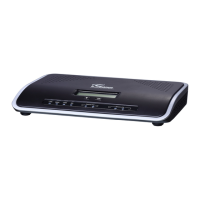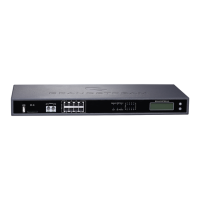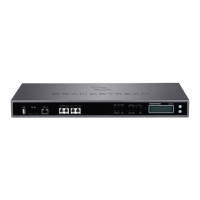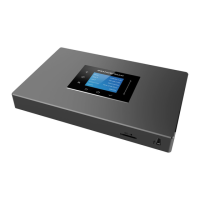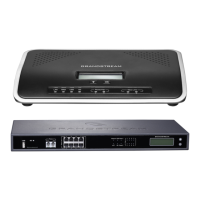UCM6100 Series User Manual
Version 1.0.18.13
Configure the password for the user. A random secure password will be automatically
generated. It is recommended to use this password for security purpose.
Configure Voicemail. There are three valid options and the default option is "Enable
Local Voicemail".
• Disable Voicemail: Disable Voicemail.
• Enable Local Voicemail: Enable voicemail for the user.
Configure voicemail password (digits only) for the user to access the voicemail box.
A random numeric password is automatically generated. It is recommended to use
the random generated password for security purpose.
Skip Voicemail
Password
Verification
When user dials voicemail code, the password verification IVR is skipped. If enabled,
this would allow one-button voicemail access. By default, this option is disabled.
If selected, this extension will be disabled on the UCM6100.
Note:
The disabled extension still exists on the PBX but can’t be used on the end device.
Configure the first name of the user. The first name can contain characters, letters,
digits and _.
Configure the last name of the user. The last name can contain characters, letters,
digits and _.
Fill in the Email address for the user. Voicemail will be sent to this Email address.
Configure the password for user portal access. A random numeric password is
automatically generated. It is recommended to use the randomly generated password
for security purpose.
Select the voice prompt language to be used for this extension. The default setting is
"Default" which is the selected voice prompt language under Web GUI→PBX
Settings→Voice Prompt→Language Settings. The dropdown list shows all the
current available voice prompt languages on the UCM6100. To add more languages
in the list, please download voice prompt package by selecting "Check Prompt List"
under Web GUI→PBX Settings→Voice Prompt→Language Settings.
Table 39: IAX Extension Configuration Parameters→Media
Configure the maximum number of calls allowed for each remote IP address.
Configure to enable/disable requiring call token. If set to "Auto", it might lock out users
who depend on backward compatibility when peer authentication credentials are
shared between physical endpoints. The default setting is "Yes".
Enable SRTP for the call. The default setting is disabled.
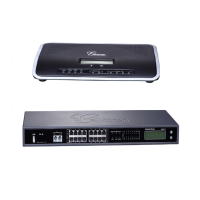
